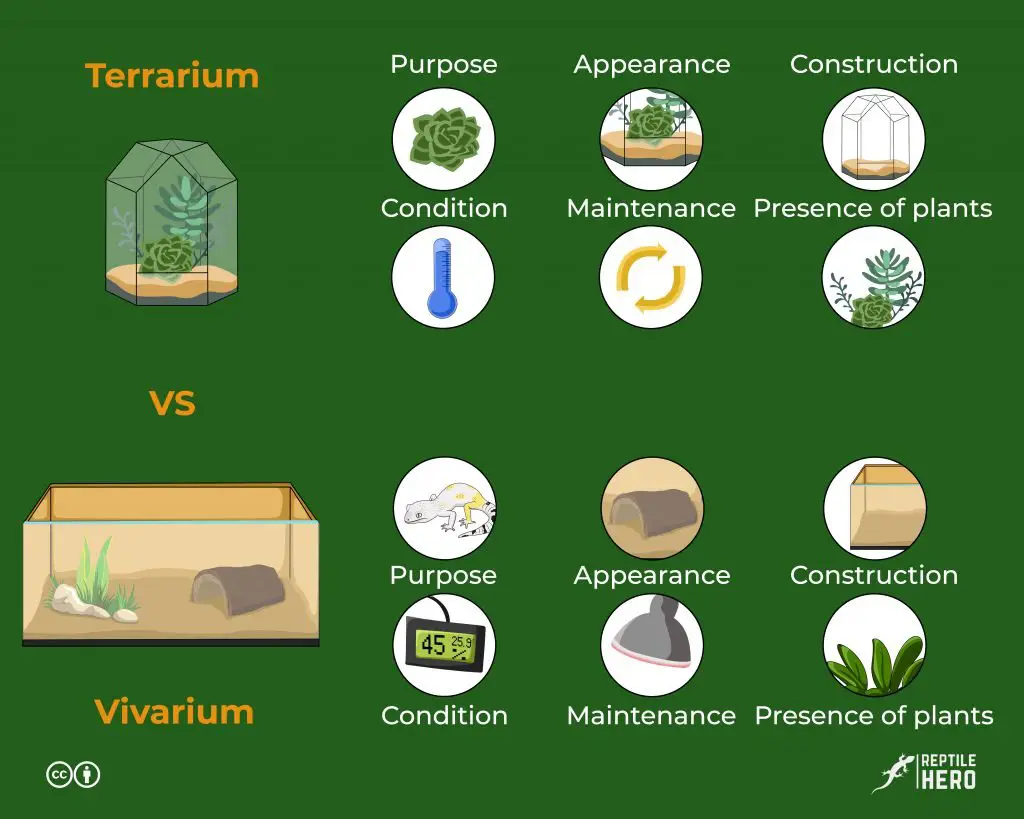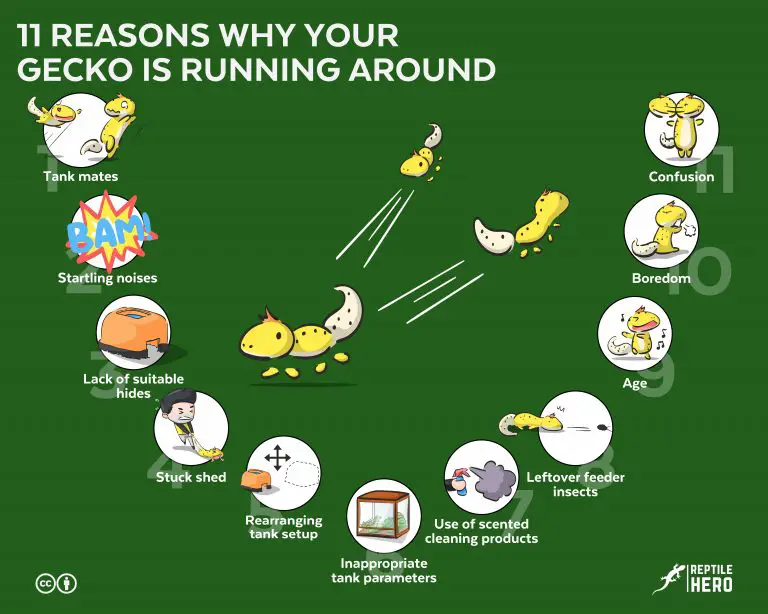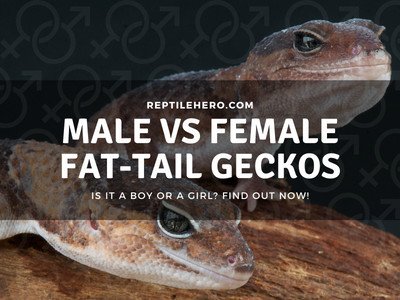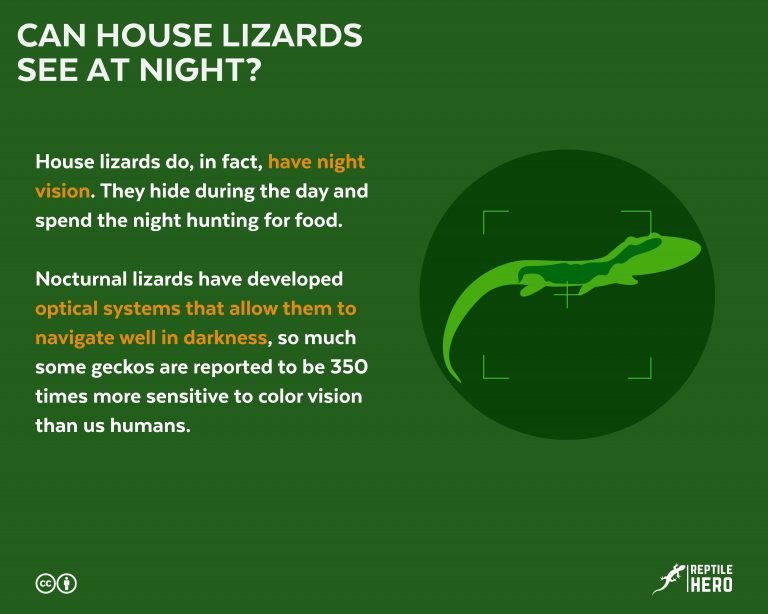Are Terrariums and Vivariums the Same? [6 Differences]
If you are new to keeping reptiles and other small animals, you might have already heard of terrariums and vivariums (plus aquariums and a whole lot more). However, things can get really confusing when you are just starting; this could lead you to refer to any enclosure without regarding which is which.
Terrariums are often glass containers set up to grow plants, whereas vivariums are enclosures that imitate a natural environment where an animal like a reptile is hosted. The two contained environments differ in six ways:
- Purpose
- Appearance
- Construction
- Condition
- Maintenance
- Presence of plants
In case you are someone like me who wants to clear things up between the two terms, stay with us as we learn their fundamental differences (among other enclosures).
Before anything else, did you know?
The root word –arium in both terrarium and vivarium is a Latin suffix that means “container or receptacle.” Now, what could the different prefixes tell us? Indeed, there is a difference. Right?
Terrariums Explained
As you might have already guessed, terrarium and vivarium get frequently tossed around interchangeably as if they mean the same thing. You might even hear (or read) others say, “Glass enclosures are terrariums while wooden ones are vivariums.”
Yet, this logic is not strictly correct. In fact, the prefix differences have already given us a clue as to what they are designed to contain. So, when you break down the word terrarium (plural: terraria or terrariums) to its Latin root words, you will get:
- terra- meaning “land or earth.”
- -arium meaning “container or receptacle.”
Literally, a terrarium is a container for living plants that recreate an environment ideal for their growth. Strictly speaking, it should be a transparent sealable glass where air, beneficial microorganisms and insects, light, soil, and water strive to achieve and maintain an ideal environment for the living plants to flourish.
In essence, you could think of terrariums as scaled-down greenhouses where you can observe natural processes like photosynthesis, respiration, and water cycling from a vantage point. Another thing is that they should also be scorched so that there are no pooled water elements like a mini pond.
However, not all terrariums are created equally. Because different living plants demand specific conditions, terrariums are divided into two types: closed and open.
Closed Terrariums
Also known as sealed terrariums, closed terrariums should only be used for plants requiring high humidity under indirect sunlight. As different natural processes work together, you could safely say that the sealed container is a self-sustainable mini-ecosystem. However, despite being fully closed, it should still have an opening for maintenance purposes when needed.
Open Terrariums
If there are closed terrariums, there should be open ones. Right? True enough, there is; and you might not have expected it!
Not all plants require what closed terrariums have to offer. Open terrariums work best for those that demand direct sunlight, low humidity, and not so moist soil. So, they are deemed more suitable. Temperate plants that fit inside usual terrarium containers are a great example of those well-adapted to drier air.

Vivariums Explained
Let us dissect the word vivarium (plural: vivaria or vivariums) to its Latin root words. What you will get are:
- vivere- (from viv-) meaning “to live or alive.”
- -arium meaning “container or receptacle.”
Basically, a vivarium is a container used “to house a life”—like a pet—by recreating a microbiome with semi-natural conditions. This is where it gets aberrant and tricky for some. Unlike a terrarium where it caters explicitly to plants, a vivarium can actually be anything that you would use to contain your pet, where the artificial environment is appropriate for the animal residing in it.
With this train of thought, you could say that vivarium is an umbrella term for any container you add your gecko to. Thus, the interest of a vivarium is on the animals and their specific environmental needs, such as:
- humidity
- lighting
- temperature
- ventilation
6 Differences Between Terrariums and Vivariums
Following the established definition, a terrarium is a type of vivarium. However, you can contradict this reasoning and go around in circles endlessly. To me, the name of the enclosure does not solely matter and gives little importance. Instead, the proper environmental conditions of the container should be suited to the gecko accordingly.
Although both enclosures can and may look remarkably similar in terms of plants and substrates, terrariums differ from vivariums (and vice-versa) in six ways:
- Purpose
- Appearance
- Construction
- Condition
- Maintenance
- Presence of plants
#1. Purpose
The main difference between terrariums and vivariums is their purpose—the priority at hand. Time and again, terrariums are aimed to raise and grow plants. Meanwhile, vivariums are intended to house pets like geckos.
So, it is the priority behind the two enclosures that matters and differs significantly. That is why it is crucial for you to appropriately optimize the system for what you aspire to contain. After all, the other differences that follow stem from the main difference—the priority—between the two.
#2. Appearance
With the contrasting purpose of both enclosures, terrariums and vivariums replicate different appearances.Terrariums simulate natural processes in the environment for plants to thrive, whereas vivariums use artificial facets to mimic geckos’ natural habitat.
Typically, terrariums are modeled after little gardens or glasshouses. Vivariums tend to be diverse, depending on the animal they house. They can be modeled from an arid and warm desert to a lush and humid jungle when containing geckos.
#3. Construction
Because both enclosures emulate different models, terrariums and vivariums are constructed disparately.Terrariums are commonly sealable glass containers of varying shapes and sizes.
On the other hand, vivariums for geckos are clear containers—plastic or glass with or without wooden aspects—that have openings. Given also that they host an animal, their construction is more complex that allows for more personalization, such as a spot to install lights and other instruments to monitor the animal.
The extra artificial components in a vivarium allow you to take total control of the environmental parameters. Furthermore, they also necessitate it to be assembled uniquely. By now, you should know by heart that you cannot (and should not) forcefully fit an exhaust fan in a glass bowl!

#4. Condition
With different inhabitants to contain, this entails terrariums and vivariums to comprise dissimilar habitable conditions. When comparing terrariums and vivariums, relative humidity, misting and watering frequencies, light cycle, temperature fluctuations, among others, should not be the same. As a matter of fact, these will be different even between vivariums that keep various species of geckos.
Generally in a vivarium, such conditions need to be monitored way more closely than they are in a terrarium. This is because plants are generally more tolerant than animals in fluctuating humidity and temperature conditions.
#5. Maintenance
Distinct (but not totally unrelated) assemblies and constructions between terrariums and vivariums call for specific maintenance. In essence, terrariums should be self-sustainable inside the sealed container. So, they must be able to look after themselves with little to no upkeep on your end.
However, with vivariums, there is not a single process that is strictly observed. The use of external light sources, regulators and other essentials often alters the prevalence of maintenance. Not to mention, the species of gecko affect this as well.
#6. Presence of Plants
While plants are the main focus in terrariums, they only serve a secondary role in vivariums in keeping the enclosure as natural as possible. More often than not, terrarium plants are not necessarily good vivarium plants, and vice-versa. So, the two enclosures are planted in a different manner.
Also, you would frequently notice vivarium plants for geckos categorized into three groups:
- foreground plants
- carpeting plants
- background plants

About Other Ariums
While vivariums can resemble terrariums, the former can resemble other biome-specific enclosures as well. Just like how adding animals to a terrarium actually turns it into a vivarium!
You could say that the naming madness does not actually stop with the two. After a considerable list of different enclosures, the names could be classified into two groups:
- environmental-pattern
- animal-pattern
Despite this, the crucial aspect here is that the microenvironment should be recreated in the best interest of the animal inhabitants—not of the plants or other matters.
Environment-pattern
Grouped under the environment-pattern are four containers that simulate particular ecosystems to accommodate specific animal species.
#1. Aviary
Previously called an aviarium, this enclosure follows an environment large enough to confine birds that allow them to fly around freely. Breaking down the word gives you its Latin roots:
- avis- meaning “bird.”
- -ary (alternate: -arium) meaning “container or receptacle.”
#2. Aquarium
This enclosure is probably the most famous on this list. You might have even heard of this before anything else. Apparently, it follows environments that are fully aquatic from the Latin roots:
- aqua- meaning “water.”
- -arium meaning “container or receptacle.”
Another Theory To Consider: In England, Philip Henry Gosse coined the word aquarium, probably opting for this word by altering the aquatic vivarium.
#3. Paludarium
You might have heard or read this term for the first time, but paludarium recreates a semi-aquatic environment containing both land and aquatic elements. Dissecting the word gives you its Latin roots:
- palus- meaning “swamp.”
- -arium meaning “container or receptacle.”
Although a paludarium is never really a swamp, it could be seen as an interconnection of aquariums and terrariums with an underwater area and a basking spot—the majority of which is heavily influenced by the former.
#4. Riparium
Another first you might have heard or read is riparium. When you break down the term into its Latin root words, you are left with:
- riparius- meaning “shore.”
- -arium meaning “container or receptacle.”
This lesser-known (and relatively new) enclosure depicts a semi-aquatic environment similar to a shoreline or a riverbank. So, the land element dominates over the supplemental water element. However, just like a paludarium, a riparium can be seen as an interaction between terrariums and aquariums.
Animal-pattern
Grouped under the animal-pattern are five enclosures named after the animal they contain. So, they can be self-explanatory to an extent.
- Dolphinarium
- Insectarium
- Koi Pond
- Penguinarium
- Serpentarium
The Causes Of Confusion
While it is run-of-the-mill to hear those two words in the world of reptiles, experts and hobbyists often interchange the two when pertaining to either of the enclosures. This causes an initial level of confusion to all owners, especially if you are yet to start your gecko-keeping journey.
Still, the confusion does not stop there as another reason often aggravates this bafflement. Initially, reptiles like geckos have not traditionally been kept as pets. Only recently did people begin containing them in empty aquarium tanks or terrariums.
Apparently, the trailblazers of such an act have never thought of referring to empty aquarium tanks or terrariums as vivariums just because they added geckos in it. So, a massive chunk of this never-ending confusion between the two enclosures arises from this part of history.
With this, sellers like pet stores (and even fabricators themselves) still continue to name and refer to clear containers used to house reptiles as terrariums to best set them apart from wooden reptile vivariums.
If you were to ask me, it does not really matter name-wise. You can use both terms flexibly all you want when referring to either of the two. However, it is essential to be aware of their six differences as these factors are a lot helpful when preparing and putting up an enclosure properly. Knowing this list helps you avoid going down the path to failure.

Heads Up! Vivariums Require More Monitoring
Unlike terrariums, vivariums would require the use of several monitoring and controlling devices to meet the specific environmental demands of a gecko, such as:
- Moisture control
- Lighting control
- Temperature control
- Ventilation control
#1 – Humidity. Not all geckos have the same tolerance for variations of moisture level inside the tank. In fact, they have pretty limited tolerance for extreme changes. For example, leopard geckos require levels below 50%, while crested geckos prefer somewhere between 60 to 80%. To achieve this, you would need to mist the tank (manually or automatically) or add dehumidifiers when necessary.
#2 – Lighting. Depending on what gecko (or other reptiles) you have, your pet would surely need a lighting system to complement its physiological needs. Especially in reptiles, lighting as an environmental parameter is vital in different situations like:
- Reptiles like crocodilians, lizards, and terrapins would need specific bulbs in their basking area to heat up their bodies.
- Lizards like leopard and crested geckos would need specialized bulbs to acquire UV rays to synthesize Vitamin D and absorb calcium.
- Lizards with different behavioral activities (crepuscular, diurnal, nocturnal) require other simulations (length and period) of light and dark, just like in their natural habitat.
For you to meet the requirements, lighting can be provided by adding external light sources like specialized bulbs and setting up accessories like a timer or regulator in the enclosure.
#3 – Temperature. Being cold-blooded animals, geckos are sensitive to intense fluctuations in their environment. So, a maintained enclosure temperature becomes an essential parameter in providing proper husbandry to your pet.
For instance, going beyond a daytime temperature above 82°F can cause a heatstroke to your crested gecko. Or another situation is a daytime temperature below 78°F in a leopard gecko’s tank can cause impaction, which is lethal to your pet.
Just like lighting, fluctuations of temperature need proper simulation, so you would need accessories like timers and thermostat to regulate the heating inside the tank
#4 – Ventilation. Although there are no specific values to follow for this parameter, proper ventilation is necessary for geckos in several ways like it:
- Encourages circulation of air
- Gives you access to dispensing food and water
- Hinders development of harmful bacteria
- Prevents growth of mold and fungus
- Provides access for regular maintenance
There are modern ways to set up proper ventilation for your tank. However, a traditional method (like adding a suction fan at a low level and an exhaust fan at a high level) is typical to go about this environmental parameter.
Fun Fact! Soothing Effects of Vivariums
The whole process of putting up and maintaining a vivarium—aquarium, terrarium, etc.—is often seen as tedious and labor-intensive. However, what comes after is, in fact, beneficial to owners and viewers alike.
In a study, a team from the National Marine Aquarium, Plymouth University, and the University of Exeter provided a piece of evidence that viewing aquarium or exposure to other underwater settings evoke a positive impact on well-being like [1]
- a noticeable reduction in heart rate and blood pressure
- an improvement in mood
- an increase of the attention span
Takeaways
Simply put, terrariums are containers that aim to grow plants independently, while vivariums are enclosures that intend to serve as a semi-natural habitat for an animal.
Terrariums and vivariums differ in six ways: 1) purpose, 2) model, 3) construction, 4) condition, 5) maintenance, and 6) presence of plants.
Apart from terrariums, there are other enclosures under the umbrella term vivarium that follow different patterns: an environment-pattern (aviary, aquarium, paludarium, riparium) or animal-pattern (dolphinarium, insectarium, Koi Pond, penguinarium, serpentarium).
Two causes often exacerbate the delineation of terrariums and vivariums in reptile-keeping: 1) indiscriminate usage and 2) improper labeling.
Sources
[1] https://www.sciencedaily.com/releases/2015/07/150729215632.htm

![How to Travel In a Car With Your Gecko? [6 Dos and 2 Don’ts]](https://www.reptilehero.com/wp-content/uploads/2021/12/car-ride-gecko-cc-768x614.jpg)

![5 Causes of Denting on Your Gecko Eggs [and 4 Solutions]](https://www.reptilehero.com/wp-content/uploads/2021/03/G38-768x614.jpg)
![Can You Train Your Gecko? [5 Tricks It Can Learn Now]](https://www.reptilehero.com/wp-content/uploads/2021/02/Gecko-Training-Infographic-768x614.jpg)

